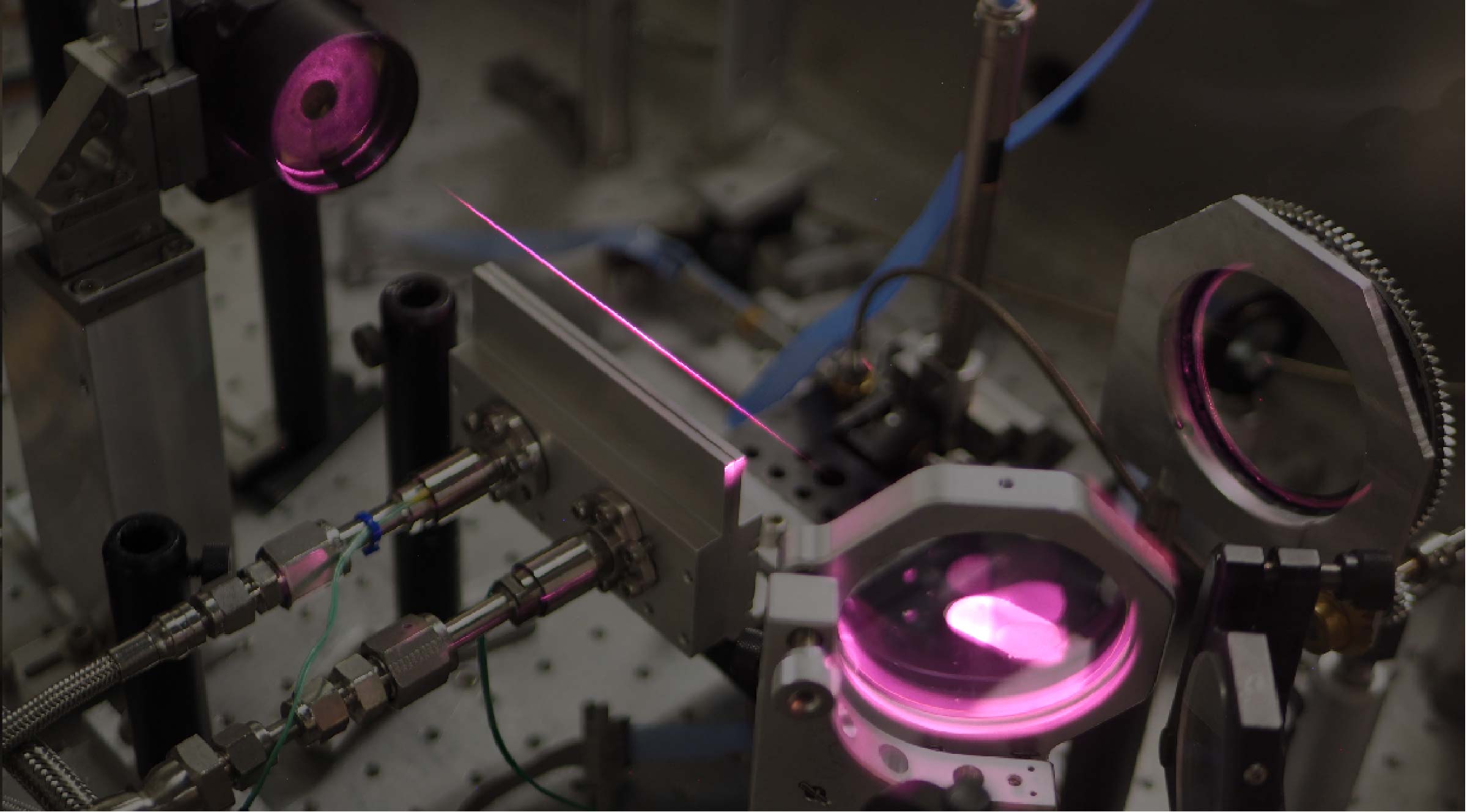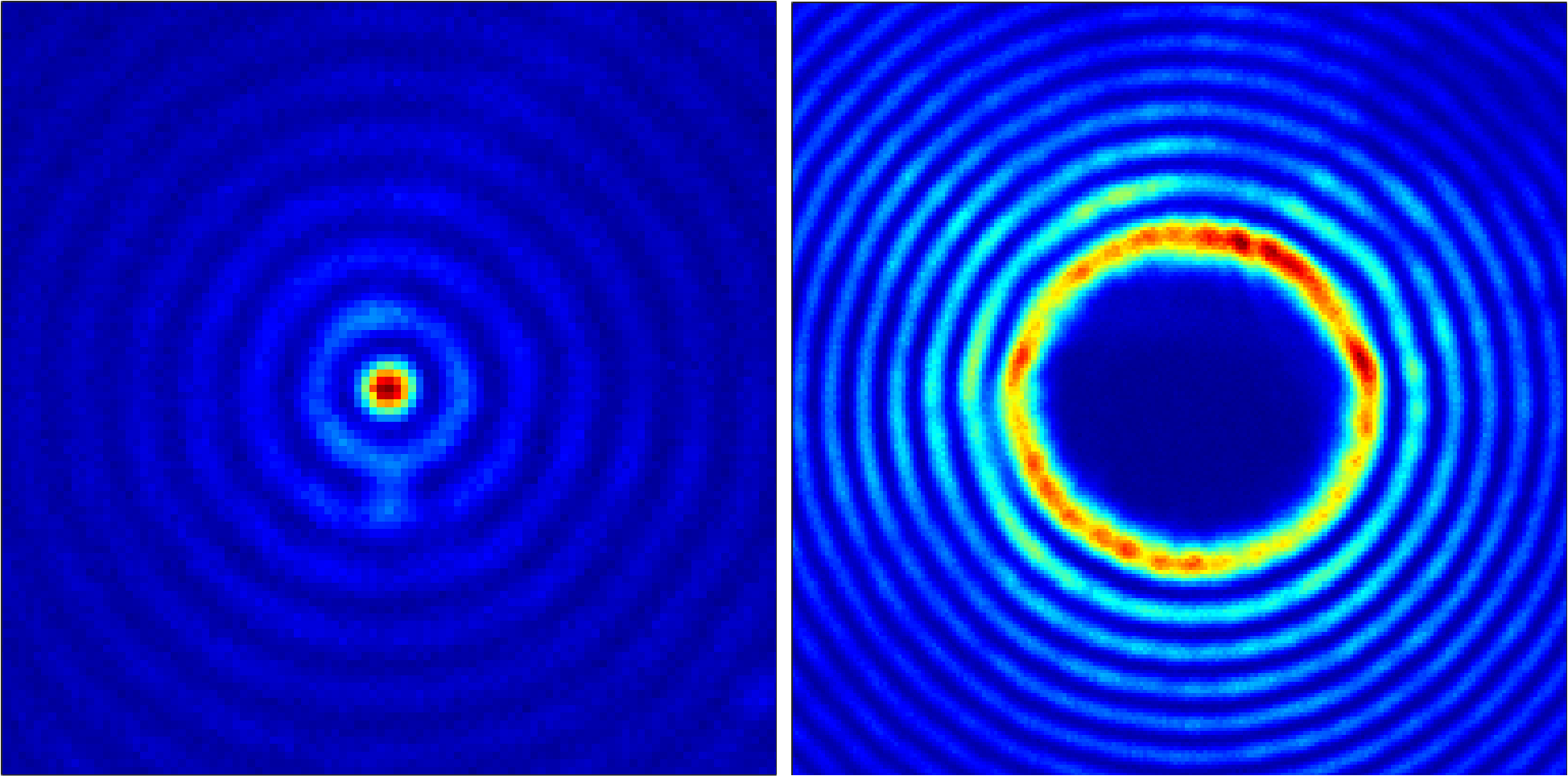In science fiction, firing powerful lasers looks easy—the Death Star can just send destructive power hurtling through space as a tight beam. But in reality, once a powerful laser has been fired, care must be taken to ensure it doesn’t get spread too thin.
If you’ve ever pointed a flashlight at a wall, then you’ve observed a more mundane example of this diffusion of light. The farther you are from the wall, the more the beam spreads, resulting in a larger and dimmer spot of light. Lasers generally expand much more slowly than a flashlight, but the effect is important when the laser travels a long way or must maintain a high intensity.
Whether your goal is blowing up a planet to achieve galactic domination or, more realistically, accelerating electrons to incredible speeds for physics research, you’ll want as tight and powerful a beam as possible to maximize the intensity. For terrestrial experiments, researchers can use devices called waveguides, like the optical fibers that might be carrying internet throughout your neighborhood, to transport a laser while keeping it contained to a narrow beam. The distinct core and outer shell—or cladding—of a waveguide keep the laser from spreading out. But if the laser pulse is too intense you run into a problem—it will destroy an optical fiber in a thousandth of a nanosecond.
 Lasers are used to create an indestructible optical fiber out of plasma that helps researchers confine a separate laser pulse as it travels through the plasma. (Credit: Intense Laser-Matter Interactions Lab, University of Maryland)
Lasers are used to create an indestructible optical fiber out of plasma that helps researchers confine a separate laser pulse as it travels through the plasma. (Credit: Intense Laser-Matter Interactions Lab, University of Maryland)
Researchers at the University of Maryland, led by UMD Physics Professor Howard Milchberg, have developed an improved technique to make waveguides that can withstand the power of intense lasers. In a paper published on August 14, 2020 in Physical Review Letters, they demonstrated how powerful pulses can be transmitted along a waveguide that is created by firing weaker laser pulses into a cloud of hydrogen. They predict that the technique, developed with support from the US Department of Energy High Energy Physics program and the National Science Foundation, will be a powerful tool in high-energy particle acceleration experiments.
“A plasma waveguide can be a powerful tool for a variety of fields,” says Bo Miao, a co-author of the paper and UMD physics postdoctoral associate. “I’m excited that the experiment finally worked out after two years of hard work of alternating delight and frustration.”
Their technique relies on building a waveguide from a plasma—a gas where the electrons have been torn from the nuclei of the atoms.
“A plasma waveguide has all the structure of an optical fiber, the classic core, the classic cladding,” says Milchberg. “Although in this case, it's indestructible. The hydrogen plasma forming the waveguide is already ripped up into its protons and electrons, so there's not much more violence you can do to it.”
In the early 1990s, Milchberg and colleagues developed a related technique to use lasers to create plasma waveguides for other, more intense, lasers. In this earlier technique a laser beam is sent into a gas; as it travels, it rips electrons from their atoms along the beam, creating a plasma tunnel that is warmer than the surrounding gas. Due to its heat, the plasma expands, forming a low-density plasma core surrounded by a high-density wall formed by the shockwave from the plasma’s rush outward.
This structure is precisely what is needed for a waveguide, but the method has a pitfall—researchers can’t craft the core and wall independently. To get the wall to have the necessary thickness and density of electrical charges to function as a waveguide, required the core to be kept too dense for particle acceleration applications.
In the new paper, the team demonstrates an improved method that lets them craft the wall and core independently. Their insight was to use two specialized laser beams—called Bessel beams—to craft the waveguide. The first laser is a simple Bessel beam that forms the low-density core while causing less heating than the previous method.
 Caption: On the left is a cross section of the intensity of the Bessel beam responsible for creating the low-density plasma core. On the right is a cross section of the intensity of the Bessel beam that creates the high-density plasma wall. The left image is 50 micrometers across and the right image is 100 micrometers across. (Credit: Intense Laser-Matter Interactions Lab, University of Maryland)But the second laser beam is more exotic. It is a hollow tube of light that allows them to build the wall of the waveguide by creating additional plasma from the gas surrounding the plasma core. Since the second laser pulse can match the shape of the high-density wall, they can tailor it without impacting the conditions of the core.
Caption: On the left is a cross section of the intensity of the Bessel beam responsible for creating the low-density plasma core. On the right is a cross section of the intensity of the Bessel beam that creates the high-density plasma wall. The left image is 50 micrometers across and the right image is 100 micrometers across. (Credit: Intense Laser-Matter Interactions Lab, University of Maryland)But the second laser beam is more exotic. It is a hollow tube of light that allows them to build the wall of the waveguide by creating additional plasma from the gas surrounding the plasma core. Since the second laser pulse can match the shape of the high-density wall, they can tailor it without impacting the conditions of the core.
“Basically, the version of the technique that was used up until our paper is very constrained in the size of the guide, the length and other parameters,” says Linus Feder, a co-author of the paper and a UMD physics graduate student. “This new technique is highly adaptable and tunable. It just does away with a lot of the restrictions on the types of laser beams you can guide.”
The researchers demonstrated that the improvement allowed them to guide a laser for 30 centimeters in a tight beam—about 50% farther than previous experiments that used wider, 20-centimeter plasma waveguides created with a different technique.
Milchberg says their waveguide is like a long hypodermic needle and that the older method was more like a drinking straw. With the smaller guide, the laser’s energy is packed into a much smaller area, resulting in a much higher intensity.
“The only reason we were limited to 30 centimeters was lab geometry and not having enough laser energy,” says Milchberg. “But with more laser energy, there's no obstacle to us doing this for a couple of meters.
The new method may increase the practicality of using plasma waveguiding of intense laser pulses to accelerate charged particles for high energy physics experiments. The group is planning experiments to confirm their predictions of how the process will work with more powerful lasers.
The paper was selected as an editors’ suggestion and was highlighted in Physical Review Focus.
Story by Bailey Bedford: This email address is being protected from spambots. You need JavaScript enabled to view it.
In addition to Milchberg, Feder, and Miao, graduate students Andrew Goffin and Jaron Shrock were co-authors.
This research was supported by US Department of Energy (DESC0015516) and the National Science Foundation (PHY1619582).
RESEARCH CONTACTS
Bo Miao: This email address is being protected from spambots. You need JavaScript enabled to view it.
Linus Feder:This email address is being protected from spambots. You need JavaScript enabled to view it.